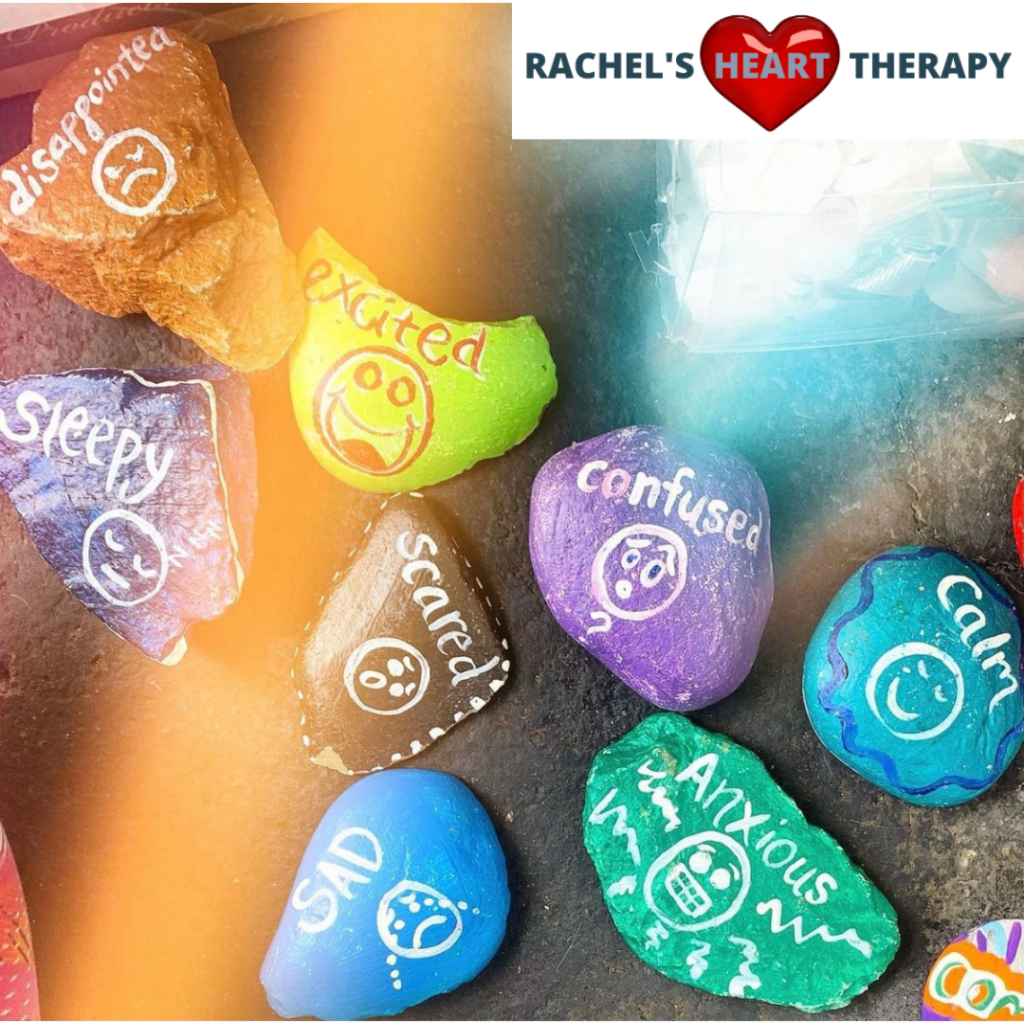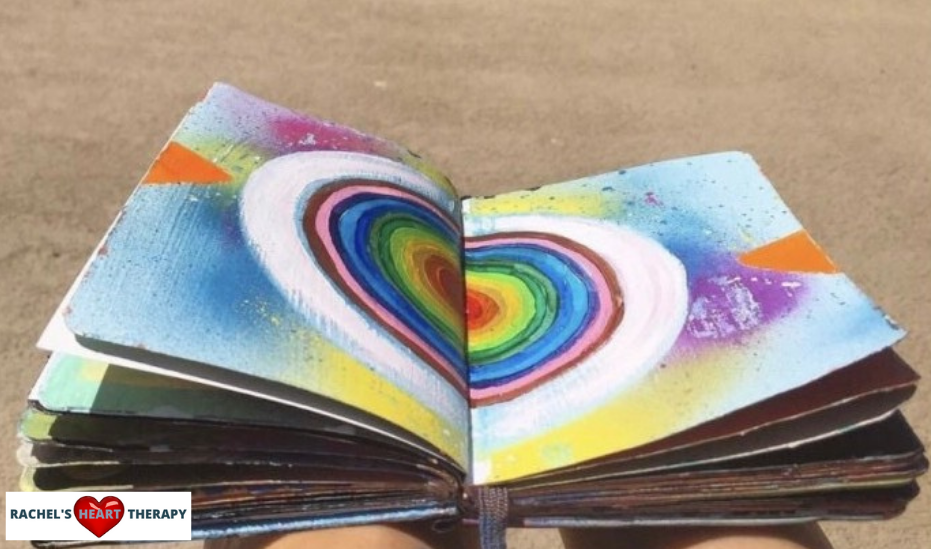Feelings Rocks – fostering emotional intelligence through psycho education and Art Therapy.
Hello and welcome to this entry in my professional journal! In this entry, I share an Art Therapy exercise that also acts as a metaphor that aides my clients to understand their feelings a little easier. As a clinician, I like to use metaphor when talking about feelings due to the complexity, overwhelm, and/or confusion that the topic can bring. The use of metaphor in therapy has a way of simplifying abstract concepts. I think that using very simple metaphors when learning about emotional intelligence can truly help my clients’ confidence around this often-challenging topic for learning and discussion. I learned this exercise during my second internship at the beginning of my career. It was part of a children’s social/emotional learning group that I facilitated at an elementary school, and I continue to use this Art Therapy directive because I love it so much! Here we have it: I have a bag or backpack that I show my clients and if I am in-person, I pass the heavy bag around for them to take turns holding it. Typically, my clients will say, “Oh my goodness, it is so heavy! What is in there?” As we open it, we see a bunch of rocks all painted with different colors and expressions representing an array of emotions. I explain that our backpack of feelings rocks can sometimes get very heavy. Sometimes we can feel it and sometimes we do not even realize how much we are carrying around. With the use of metaphor as well as a tangible object, I find that I reach my clients more immediately and they are totally engaged. Seeing and feeling the weight of all those feelings rocks (even the pleasant ones) truly allows for smoother processing and learning. I find that this style of teaching also has all the components of each learning style to reach everyone – including a tactile component. I find the tactile component (as well as visual) very helpful when teaching my clients about emotions because emotions are not visible or something we can hold like an object. The above digital collages represent examples of some activities while living life — in which we might carry our backpack of emotions with us possibly weighing us down (think of the weight of the rocks). We do such a good job carrying that bag around with us; however, it can be helpful to routinely empty. We start to take out each rock, one by one together and talk about it. When I facilitate group therapy, I ask children to raise their hands. Have you ever felt anger? So often anger is one that more children slightly raise their hand while looking around and then quickly put it down again. “Oh, no, not anger, because that is bad!” This is always such a great psycho education opportunity in which I can provide for my clients. I explain to them that anger is not a bad emotion, in fact, there are no bad emotions. All emotions are valid and okay! Most children will then feel relieved and confirm they have felt this emotion, allowing them to feel more comfortable raising their hands. This Art Therapy directive can be helpful for my clients because it opens so many opportunities for learning. We might talk about how there are pleasant emotions and unpleasant ones, not necessarily “good” emotions, or “bad” emotions. We might talk about how important it is to feel and understand both the pleasant and not so pleasant emotions because when we ignore the unpleasant ones, it can take away from the pleasant ones, too. Also, even emotions that are considered “good” or pleasant (like joy, love, safe, happy) can be very difficult to feel for some people and that is okay, too, and discuss the reasons why. Also, we talk about how important it is to express or feel those pleasant feelings. This emotional world is very dynamic, complex, and unique for each individual. I always find time to teach my clients that we might feel “bad”, or shame/guilt based on how we express our anger. We talk about healthy and unhealthy ways to express anger or any emotions that my client(s) feel is unpleasant to them. I made a poster/collage when I first learned this Art Therapy directive that depicted healthy and unhealthy ways to express our emotions. It is fun to go through these and talk about them and ask my clients what they think. I replicated the poster below for you. These images represent only a few examples of unhealthy and healthy ways to express/feel/cope with emotions. It is important to explain excess here as well. Watching some TV is not necessarily unhealthy, but in excess can be. On my physical poster, I also have exercise under unhealthy and explain that too much exercise can harm us, etc. There are so many ideas to draw upon just based on this directive for continued learning. Clients can make their own personal collages (physical or digital – print or hang them up) and the list goes on about all the possibilities! And, as we take the feelings rocks out of our backpack and talk about them, express and feel them in healthy ways… our backpack gets lighter. It is a lot of work, however, it does get easier the more we practice it! It can feel pleasant to give ourselves some acknowledgment for our hard work and efforts. I would even say that this step at the end of unloading our feelings rocks is important. That acknowledgment is unique to what the client needs personally. Simply telling yourself you did a good job, giving yourself a hug or a smile, feeling the value of your efforts; feeling pride or another feeling that comes up for you, and trying to internalize your growing emotional intelligence, learning — your emotional independence! This can be more difficult than it sounds to internalize the praise you give yourself…
Read more



